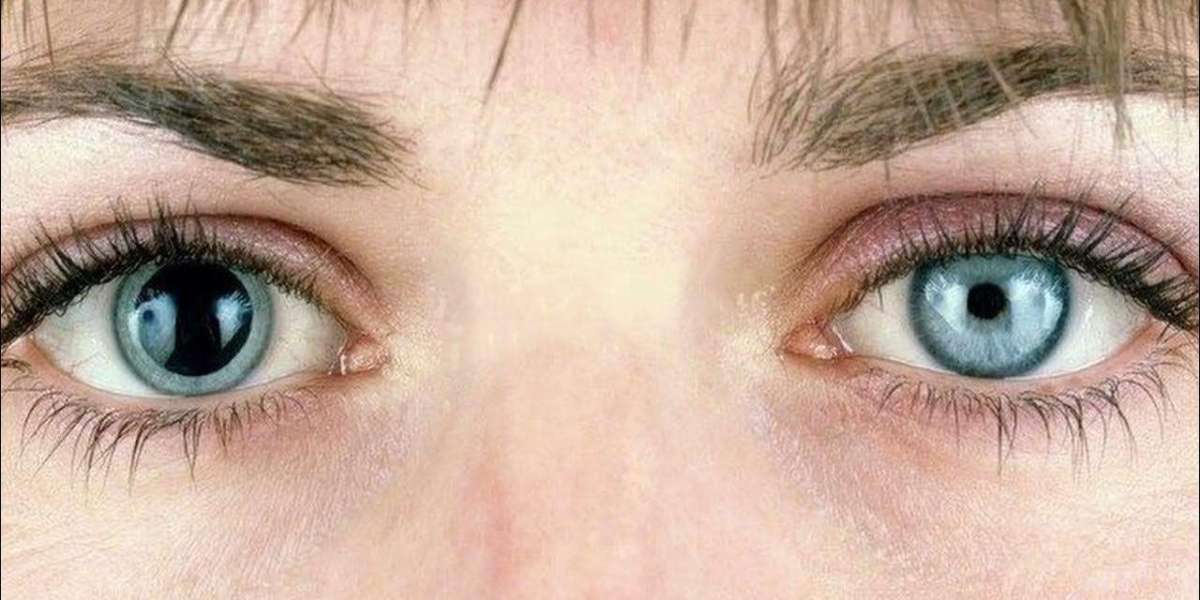Pupil constriction is a fascinating process regulated by the nervous system, specifically involving the autonomic nervous system. This automatic function of the body plays a key role in controlling the size of the pupil, which is essential for regulating the amount of light entering the eye. In this article, we will explore the role of the nervous system in pupil constriction, understand what causes constricted pupils, and the various factors that influence this process.
Understanding Pupil Constriction
The pupil, the black circular opening in the center of the iris, adjusts in size to control the amount of light that enters the eye. Pupil constriction, also known as miosis, occurs when the pupil becomes smaller, limiting the amount of light reaching the retina. This is a vital protective mechanism for the eye, particularly in bright environments.
The pupil’s size can be influenced by various factors, including light intensity, emotional reactions, and specific physiological or pathological conditions. Understanding the nervous system's role in controlling this response helps explain why pupils react differently in various situations.
The Autonomic Nervous System and Its Role
The autonomic nervous system (ANS) controls many involuntary body functions, such as heart rate, digestion, and pupil size. It is divided into two branches: the sympathetic nervous system and the parasympathetic nervous system. These two systems work together to regulate pupil size in response to different stimuli.
The parasympathetic nervous system plays a crucial role in pupil constriction. When activated, it stimulates the muscles around the pupil, causing them to contract and reduce the pupil's size. The neurotransmitter acetylcholine is released, triggering this contraction. This process helps to protect the retina from excessive light exposure, preventing damage to the sensitive light receptors in the eye.
The Role of the Sympathetic Nervous System in Dilation
While the parasympathetic system is responsible for constricting the pupil, the sympathetic nervous system plays a key role in pupil dilation. When the body is under stress or in low-light conditions, the sympathetic system is activated to dilate the pupils, allowing more light to enter the eye. This mechanism is crucial in situations where the body needs to enhance vision, such as in dimly lit environments or during the fight-or-flight response.
Though the sympathetic system typically causes pupil dilation, its opposite—the parasympathetic system—is directly responsible for constricting the pupils, especially in bright conditions. This balance between the two systems ensures that the eyes can function optimally in different light conditions.
What Causes Constricted Pupils?
Pupil constriction can be triggered by several factors, both physiological and psychological. One of the most common reasons is bright light. When exposed to intense light, the brain signals the parasympathetic nervous system to constrict the pupils, thus reducing the amount of light entering the eye. This process is known as the pupillary light reflex.
Another cause of constricted pupils is the body’s response to certain drugs or medications. Some drugs, such as opioids, can activate the parasympathetic nervous system, leading to miosis. Conversely, other substances, such as stimulants, may cause pupil dilation by stimulating the sympathetic nervous system.
In addition, emotional reactions can trigger pupil constriction. Stress, anxiety, or calmness can activate the parasympathetic nervous system and result in a smaller pupil size. This highlights the connection between the nervous system and emotional states, emphasizing how psychological factors can influence the functioning of the eye.
Abnormal Pupil Constriction
Abnormalities in pupil constriction can indicate underlying medical conditions. For example, if the pupils constrict abnormally in response to light or remain constricted for prolonged periods, it may signal a neurological issue. Conditions such as Horner's syndrome, which affects the sympathetic nervous system, can lead to one-sided pupil constriction. Similarly, certain brain injuries or diseases may impair the normal functioning of the parasympathetic nervous system and disrupt pupil response.
On the other hand, some medications, such as those used for treating glaucoma or certain types of eye drops, can induce pupil constriction as a side effect. While these effects may be intentional, it is essential to monitor any significant changes in pupil size as they may also indicate a need for medical attention.
What Causes Constricted Pupils? The Impact of Light and Stress
What causes constricted pupils? As mentioned earlier, bright light is the most common external trigger. In addition to this, stress and emotional states can have a profound impact on the nervous system, influencing pupil size. When we experience stress or anxiety, the body can sometimes overreact by causing unnecessary constriction of the pupils. This can result in visual disturbances or discomfort, as the amount of light entering the eye is reduced.
Medical and Environmental Factors Influencing Pupil Constriction
Aside from light and emotional reactions, other medical and environmental factors can influence pupil constriction. Certain diseases, such as brain injuries, infections, and conditions that affect the nervous system, can impair pupil responses. For example, brain injuries may lead to abnormal pupil reactions, such as sluggish or non-reactive pupils, which may indicate serious damage.
Additionally, medical treatments involving eye drops or medications can alter the typical pattern of pupil constriction. Drugs that affect the nervous system, including opioids or antihypertensive medications, may also result in miosis as a side effect.
Conclusion
The role of the nervous system in pupil constriction is an essential aspect of our body’s ability to regulate light intake and protect the eyes. By understanding the balance between the parasympathetic and sympathetic nervous systems, we can better appreciate how our eyes react to various stimuli, including light, emotions, and external factors.
What causes constricted pupils? The answer lies in the complex interplay between the autonomic nervous system and various external triggers. Understanding these mechanisms can not only provide insight into normal physiological responses but also help detect potential health issues related to the nervous system.


